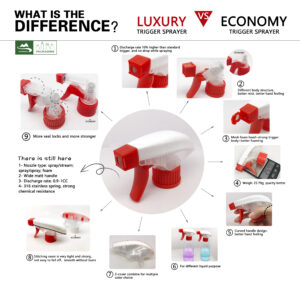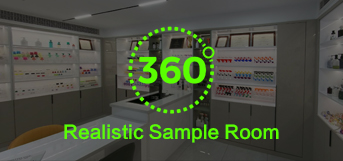Technology Definition
Electroplating is the abbreviation of electrolytic metal plating. Electroplating is a method of immersing the plated part (product) in a solution containing metal ions to be plated and connecting the cathode, placing an appropriate anode (soluble or insoluble) at the other end of the solution, and passing direct current to deposit a metal film on the surface of the plated part. Simply put, it is a change or combination of physics and chemistry. The most common electroplating methods currently encountered are: aqueous solution electroplating (roller plating, rack plating, continuous plating) and chemical electroplating.
Process characteristics
Process cost: mold cost (none), unit cost (high);
Typical products: surface treatment of transportation, consumer electronics, furniture, jewelry and silverware, vân vân.;
Suitable output: single piece to large batch;
Quality: extremely high gloss, anti-oxidation and corrosion;
Speed: medium speed, depending on the type of material and coating thickness.
System composition
1. Electroplating equipment
The biggest functional advantage of electroplating is that it can form a new and extremely glossy metal layer on the surface of metal and non-metal parts, directly improving the visual grade of the original parts. Compared with directly forming parts with metal, the cost is much lower. Electroplating is performed on specific areas on the surface of the same part. Special wax and paint can be applied to areas that do not require electroplating. Chrome plating is widely used for surface treatment in the transportation and furniture industries.
2. Main materials:
There are more than 30 types of electroplated metals, among which zinc, cadmium, copper, nickel, chromium, silver, tin, gold, iron, cobalt, lead, antimony, platinum, titanium, and more than ten types are widely used. In addition to single metal plating, there are many alloy platings, such as copper-tin, copper-zinc, copper-nickel, nickel-iron, lead-tin, zinc-tin, zinc-iron, zinc-nickel, copper-cadmium, zinc-cadmium, tin-iron, tin-cobalt, tungsten-iron, vân vân.
In terms of plastics, ABS is the most commonly used because ABS can withstand the high temperature of 60 °C (140 °F) for electroplating, and its electroplated layer and non-electroplated layer have high bonding strength. Most metals can be electroplated, but different metals have different levels of purity and electroplating efficiency. The most common ones are: tin, chromium, nickel, silver, gold and rhodium (rhodium: a type of platinum, extremely expensive and can maintain high brightness for a long time, and can resist most chemicals and acids. It is most commonly used in products that require extremely high surface gloss, such as trophies and medals). Nickel metal cannot be used for electroplating products that come into contact with the skin because nickel is irritating and toxic to the skin.
3. Plating Description:
According to the plating layer, it can be divided into chrome plating, copper plating, cadmium plating, tin plating, zinc plating, vân vân.
Process flow
During electroplating, the plating metal or other insoluble materials serve as the anode, the workpiece to be plated serves as the cathode, and the cations of the plating metal are reduced on the surface of the workpiece to be plated to form a plating layer. In order to eliminate the interference of other cations and make the plating uniform and firm, a solution containing the plating metal cations is required as the plating solution to keep the concentration of the plating metal cations unchanged. The purpose of electroplating is to plate a metal coating on the substrate and change the surface properties of the substrate.
Let’s take the common ABS plastic parts electroplating as an example. ABS electroplating is to chemically corrode the B (butadiene) in ABS to make the surface of the product have some loose pores, and then attach a layer of conductor (such as copper) to make it conductive, and then refer to the metal electroplating method for electroplating. Vì vậy, ABS electroplating is a mixture of chemical plating and electroplating.
Electroplating process: pre-treatment (grinding → pre-cleaning → water washing → electrolytic degreasing → water washing → acid immersion and activation → water washing) → neutralization → water washing → electroplating (priming) → water washing → neutralization → water washing → electroplating (surface) → water washing → pure water → dehydration → drying
UV Product Display
Application of cosmetic packaging
In the cosmetic packaging industry, the electroplating coating cannot be in direct contact with the contents, so the electroplating process is mainly used for external components, such as various packaging shells, lipstick shells, bottle cap shells, cosmetic tool components, vân vân.














